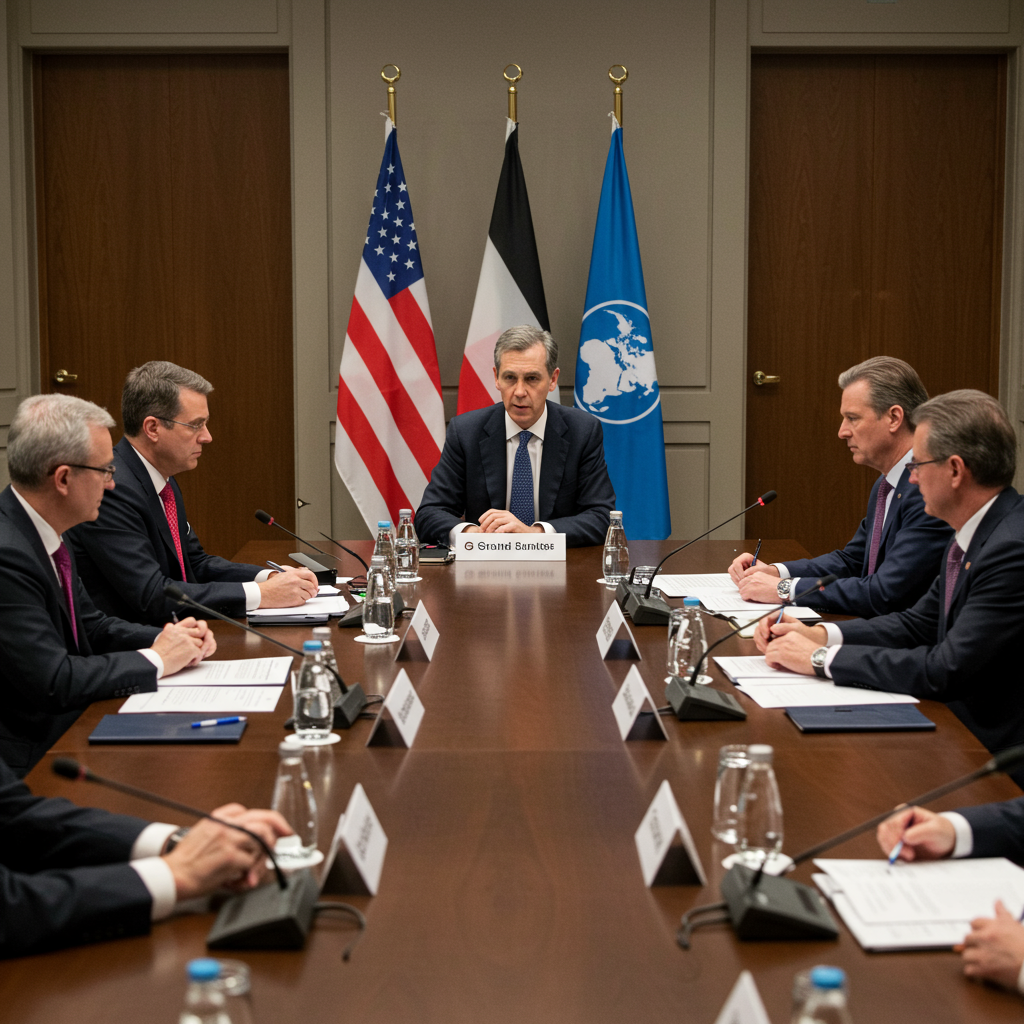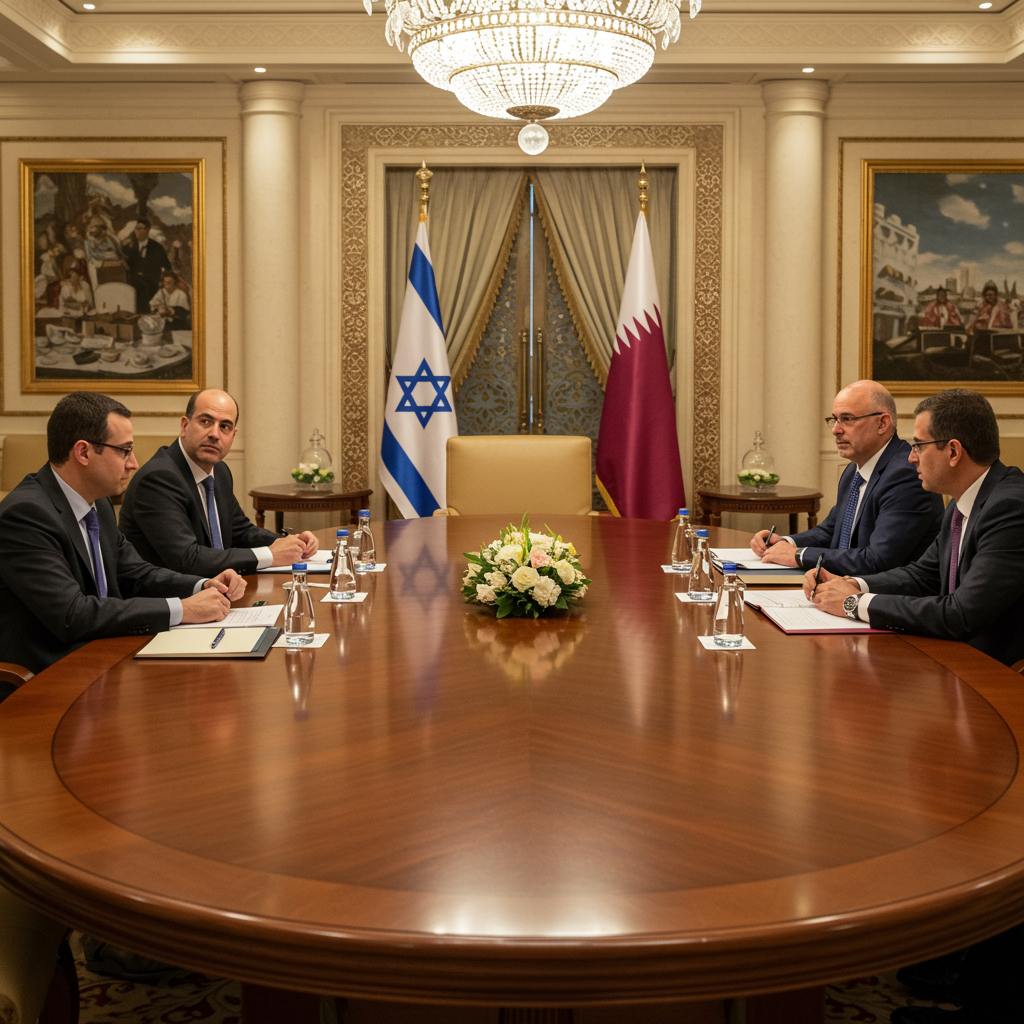Canada recently hosted the Group of Seven (G7) leaders’ summit in Kananaskis, Alberta, with Prime Minister Mark Carney presiding over his first major international gathering as host. While a carefully planned agenda focused on strengthening the global economy and enhancing peace was set, unforeseen global crises dramatically reshaped the discussions, leading to a summit marked by both disruption and focused diplomacy.
The escalating conflict between Israel and Iran unexpectedly became the dominant issue, diverting global attention from the resort in Canada’s Rocky Mountains. Adding to the drama, US President Donald Trump departed the summit early, citing the need to return for “very important” reasons related to the Middle East.
Despite these challenges, Prime Minister Carney stated that the summit could nonetheless “begin a new era of co-operation that promotes long-term resilience.” Navigating intense geopolitical pressures and differing national priorities, leaders grappled with immediate crises while attempting to advance their core agendas.
Here are five key takeaways from the eventful G7 summit in Canada:
Trump’s Unexpected Early Exit
US President Donald Trump’s decision to leave the summit late on Monday, a full day ahead of schedule, significantly altered the dynamics. Trump stated his early departure was necessary due to rapidly unfolding events between Israel and Iran. The White House maintained he had a “great day” and achieved much before leaving, with Treasury Secretary Scott Bessent staying on as the US representative.
Other G7 leaders publicly downplayed the abrupt departure. Prime Minister Carney stated his full understanding, while French President Emmanuel Macron dismissed a reporter’s question about the group effectively becoming a G6 as “disrespectful.”
However, the unscheduled exit meant Trump missed planned bilateral meetings with several key leaders, including Ukraine’s Volodymyr Zelenskyy and Mexico’s Claudia Sheinbaum (though he reportedly spoke with Sheinbaum later by phone). The suddenness heightened the summit’s dramatic atmosphere. Some observers, like Denisse Rudich of the G7 Research Group London, suggested that while potentially disruptive, Trump’s absence allowed the remaining leaders to appear more relaxed and engage more naturally, having previously seemed “on eggshells” in his presence.
Middle East Conflict Overshadows Agenda
The intensifying conflict between Israel and Iran, which saw continuous exchanges of strikes leading up to and during the summit, heavily impacted the proceedings. Much of the first day was reportedly spent seeking consensus on a G7 response as global attention shifted to the region.
Ultimately, all seven nations issued a joint statement hours after Trump’s departure. Described as “tersely worded,” it declared Iran “can never have a nuclear weapon,” backed Israel’s “right to defend itself” and security, and labeled Iran a “principal source of regional instability.” The statement urged a “de-escalation of hostilities in the Middle East, including a ceasefire in Gaza,” notably stopping short of calling for a ceasefire specifically between Israel and Iran. Achieving unanimity on even this short statement was seen by some analysts as a “modest measure of success” given the difficulty reaching consensus.
There was public disagreement between Trump and Macron regarding discussions about a potential ceasefire, highlighting underlying tensions. Macron reportedly stated he was not responsible for shifts in the US administration’s position. Despite the back-and-forth, the statement was presented as a show of G7 unity on the Middle East.
Complex Geopolitics: Ukraine, India, and Canadian Diplomacy
Beyond the dominant crises, the summit addressed a range of complex geopolitical issues.
Ukrainian President Volodymyr Zelenskyy attended the summit, receiving new aid from Canada. However, there was notably no joint G7 statement of broad support. Reports suggested Canada had dropped plans for a stronger statement due to US resistance, though Prime Minister Carney denied a lack of consensus, pointing instead to remarks in the summit chairman’s summary. This summary expressed G7 support for Trump’s efforts toward peace in Ukraine and pressed Russia for a ceasefire, while also stating resolve to explore maximum pressure options, including financial sanctions – an approach Trump has reportedly resisted. Trump’s differing stance on the conflict, suggesting it might not have happened if Russia hadn’t been expelled from the G8 and stating he only cared about “saving lives,” contrasted sharply with the position of other G7 members actively imposing new sanctions on Russia.
The attendance of Indian Prime Minister Narendra Modi was a sensitive point among Sikh Canadians due to ongoing diplomatic tensions following Canada’s accusation of India’s involvement in the killing of a Sikh separatist leader on Canadian soil. Despite controversy, Carney invited Modi, and the two countries agreed to restore diplomatic services. Carney’s office reported that he raised issues like “transnational crime and repression, security, and the rules-based order” with Modi.
As host, the summit was a significant test for Prime Minister Carney. Learning lessons from the contentious 2018 G7 summit in Quebec, which ended in acrimony after Trump publicly criticized then-PM Justin Trudeau, Canada opted to issue multiple shorter joint statements on specific topics rather than seeking a single broad communique. This strategy aimed to facilitate concrete agreements despite potential disagreements. Carney’s approach was described as “concise, detailed, action-oriented” and “outcomes focused,” reflecting his background as a former central bank governor. Agreements were reached on topics like artificial intelligence, quantum computing, migrant smuggling, and critical minerals. An agreement to boost global co-operation on wildfires, notably made without specific reference to climate change, was cited as an example of this results-oriented diplomacy.
The Trade Tug-of-War
Trade negotiations were a major focus, particularly for both the Canadian and US hosts.
Prime Minister Carney came into the summit aiming to advance Canada’s goal of strengthening its economy to be the strongest in the G7 and reducing its deep economic reliance on the US. This included pitching trade opportunities to multiple world leaders and seeking agreements with other partners, such as European officials who indicated they were close to a defence procurement deal to lessen dependence on American equipment.
A key moment was the sit-down between Carney and Trump. Reports suggested the two countries were close to a trade and security deal. While Trump described hurdles remaining, highlighting his preference as a “tariff person” versus Carney’s “more complex idea,” a statement from Carney’s office indicated they agreed to pursue negotiations toward a deal within the next 30 days, aiming for outcomes aligned with both countries’ interests.
President Trump was open about his desire for trade deals at the summit, reflecting his broader policy of using tariffs to encourage domestic production, which has caused global alarm and particularly affected key sectors like UK car manufacturing and steelmaking.
While a deal with Canada wasn’t finalized, British Prime Minister Sir Keir Starmer and Trump brought parts of a tariff agreement they sealed last month into force. Starmer highlighted the significant positive impact for UK jobs, particularly in the automotive and aerospace sectors (removing tariffs on aerospace and reducing the car levy to 10%), though steel tariffs (25%) remained unresolved. Trump notably stated British trade was “very well protected” because he “like[d] them,” calling it their “ultimate protection.” Other leaders, including Japan’s Shigeru Ishiba and EU Commission President Ursula von der Leyen, also pursued trade talks with Trump, with Ishiba and Trump agreeing to push ahead despite remaining divisions, and EU-US talks described as complex but advancing towards a July goal. Trump faces self-imposed pressure to finalize deals by his July 9 deadline.
A Summit Navigating Crises
The G7 summit in Kananaskis unfolded amidst unexpected crises and persistent global challenges. While the meticulously planned agenda was significantly altered by the Middle East conflict and President Trump’s early departure, leaders still managed to address a range of issues from Ukraine and India relations to specific areas of co-operation like AI and critical minerals. The focus on multiple, outcomes-oriented statements marked a strategic shift aimed at achieving tangible progress in a consensus-based body, a lesson potentially learned from past G7 disruptions.
Despite the drama and public disagreements, particularly surrounding trade and differing views on global conflicts, the summit produced joint stances on critical issues like the Middle East de-escalation and laid groundwork for future trade talks. It served as a crucial test for Prime Minister Carney’s leadership on the world stage, highlighting both the unpredictable nature of global politics and the persistent effort required to forge international co-operation in a turbulent era.



